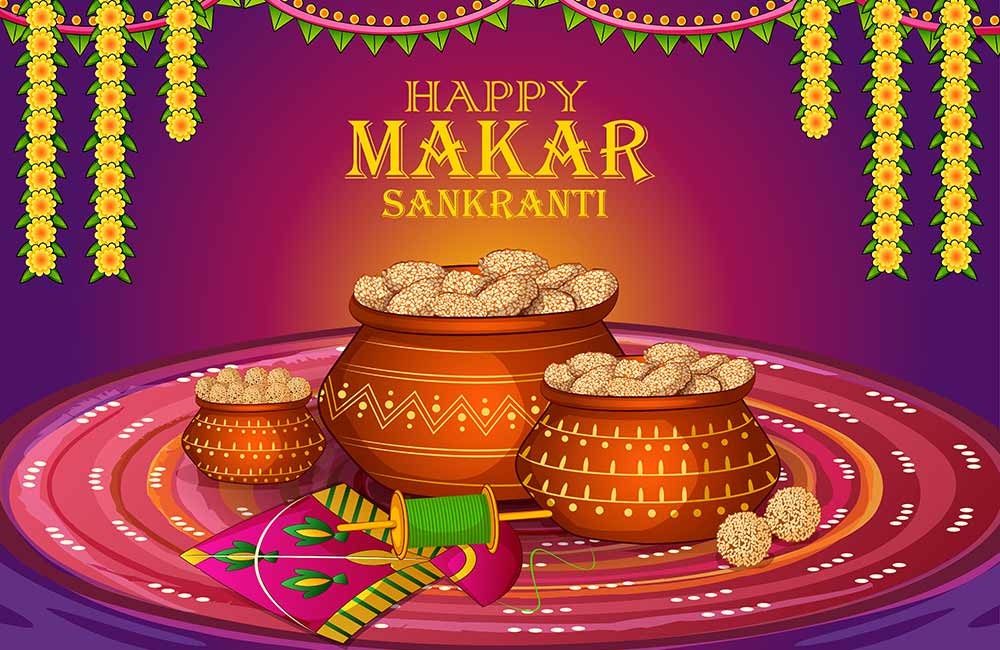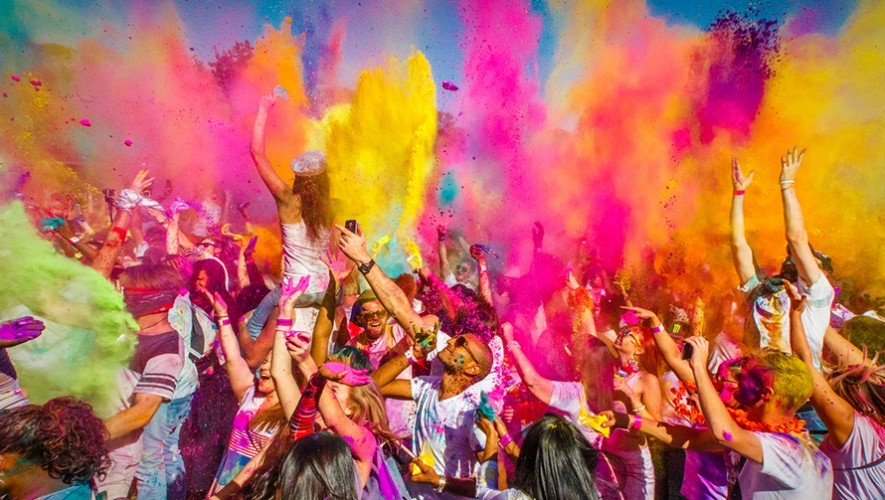The Colors and Celebrations of Makar Sakranti
Makar Sakranti is a much-loved festival celebrated in India. It marks the transition of the Sun from the zodiac sign of Sagittarius to Capricorn. Celebrated with much fanfare and joy, Makar Sakranti is a harvest festival celebrated by people of all religions. The day is celebrated with bright colors, flying kites, bonfires, music, dance, and scrumptious feasts. The colorful and vibrant celebrations of Makar Sakranti make it one of the most eagerly awaited festivals in India.
What is Makar Sakranti?
Makar Sakranti is a Hindu festival that marks the transition of the sun from Sagittarius to Capricorn, known as the sun’s entrance into Makara Rasi. It is celebrated on the 14th or 15th of January every year and marks the end of the winter season in India. The festival marks the start of the spring season and is celebrated all over India with great enthusiasm and religious fervor.
Makar Sakranti is an important festival for Hindus and has been mentioned in several ancient Vedic texts. According to ancient scriptures, this festival marks the beginning of a new era, where many positive things start happening in the life of people who observe it. People also believe that this day marks a period of prosperity and abundance.
On this day, people perform several religious activities such as taking a dip in holy rivers, offering prayers to their gods and performing puja (ritual) to seek blessings. They also exchange gifts, sweets, and sesame seeds as a token of love and friendship. Another ritual during Makar Sakranti involves flying kites in the sky, which is considered symbolic of attaining freedom. Kite-flying is especially popular in Rajasthan, Gujarat, and parts of Maharashtra.
Furthermore, there are numerous fairs and carnivals organized in different parts of India to celebrate the auspicious occasion. These fairs are characterized by bright colors, music, traditional attire, kite-flying competitions, and other fun activities. In some parts of India, bonfires are lit up at night to honor Agni Deva, the Lord of Fire.
Many people also prepare special dishes made with sesame seeds called Til Laddoo and sweets made out of jaggery called Til ki Chikki. This sweet dish symbolizes abundance and success throughout the coming year. Makar Sakranti provides us with an opportunity to pause and reflect upon our lives while we celebrate this unique festival with friends and family.
The Significance of Makar Sakranti
Makar Sakranti is an essential festival celebrated by people of the Hindu faith all across India. This festival marks the end of the winter solstice and the beginning of longer days. It falls on the 14th day of the Hindu month Magha (January–February) and is celebrated to signify the transition from the cold, dark winter to the brighter, warmer days of spring
The festival has been celebrated in India for centuries and is seen as a time for family gatherings, prayers, and special rituals. According to legend, it is believed that on Makar Sakranti, the gods and goddesses come down to earth and bless the people with health and prosperity. People also offer their prayers to the Sun god, Surya Narayana, to seek his blessings.
The festival also carries immense cultural and social significance. On this day, people exchange sweets, wear new clothes, celebrate feasts and parties, and generally express joy in coming together to honor the changing season. On a deeper level, the festival is seen as a reminder to be kinder and generous, as well as a symbol of good fortune and happiness.
During the festivities, Hindus often visit temples dedicated to Lord Shiva and Goddess Parvati and make offerings such as flowers, food, and coins. Fireworks are set off during the evening while families gather around bonfires, sharing traditional dishes like Til-gud laddoo, Gajak, chikki, and khichdi.
Til-gud laddoos are traditionally made of sesame seeds and jaggery; Gajak is made up of dry fruits and nuts; chikki consists of sesame seeds and jaggery, and khichdi is a traditional dish made up of rice and lentils.
The celebrations of Makar Sakranti
Makar Sakranti is celebrated in many different ways throughout India. It’s a joyous festival with singing, dancing, and much merriment. One of the most popular activities associated with Makar Sakranti is flying kites, which is believed to bring good luck. People gather in wide-open spaces and fly their kites as a symbol of freedom. Kite flying is usually accompanied by singing and music. Many Hindus also visit temples to offer prayers and pay their respects to the gods.
In some parts of India, families also gather together to prepare traditional sweets such as laddoos, kheer, and other desserts. Bonfires are lit in some parts of the country and people gather around to offer prayers and thanksgiving. People exchange gifts, wear new clothes, and visit friends and relatives.
Makar Sakranti is a unique and joyous occasion that brings people from all corners of India together in celebration. The colors, the food, the prayers, and the festivities make this festival truly special. In addition to its spiritual aspect, Makar Sakranti serves as a reminder to appreciate nature’s bounty and cherish the winter season.
The tenth day, called Vijayadashami, is devoted to worshipping Durga in her form as Mahishasuramardini, meaning “slayer of the demon Mahishasura”. This symbolizes the victory of angelic over evil and the triumph of truth over falsity.
From north to south, east to west, Indians everywhere celebrate this festival with enthusiasm and happiness. Not only do they take part in festive activities like kite flying, but they also enjoy sharing stories and enjoying each others' company over delicious treats.
On this day, even strangers become friends, as they come together in cheerful camaraderie and laughter. As the sun sets on Makar Sakranti, everyone looks forward to the year ahead with hope and optimism.
The colors of Makar Sakranti
Makar Sakranti, the harvest festival in India, has many associated colors. In most Indian states, this festival is celebrated with bright and cheerful hues that symbolize joy and prosperity. Red, yellow, and green are the primary colors used to represent the festival’s spirit and energy.
Red is the primary color of Makar Sakranti, signifying celebration and joy. This hue is most often seen during this holiday in the form of bright and vibrant saris, skirts, and accessories. It is also common to see bright red vermillion powder used during prayers to the sun god.
Yellow is another color associated with Makar Sakranti. This color symbolizes hope and new beginnings. During this festival, yellow items like sweets and decorations are often used to add a touch of joy to the occasion.
The color green is also widely used during Makar Sakranti. This color symbolizes good fortune, success, and abundance. During the festival, people decorate their homes with bright green ornaments and adornments in the hopes of inviting good luck into their lives.
All of these colors come together to create a beautiful celebration of life and abundance for all Indians during Makar Sakranti. Whether it’s through wearing traditional clothing, decorating the home, or offering up prayers to the sun god, Makar Sakranti is truly a time of celebration and joy.




